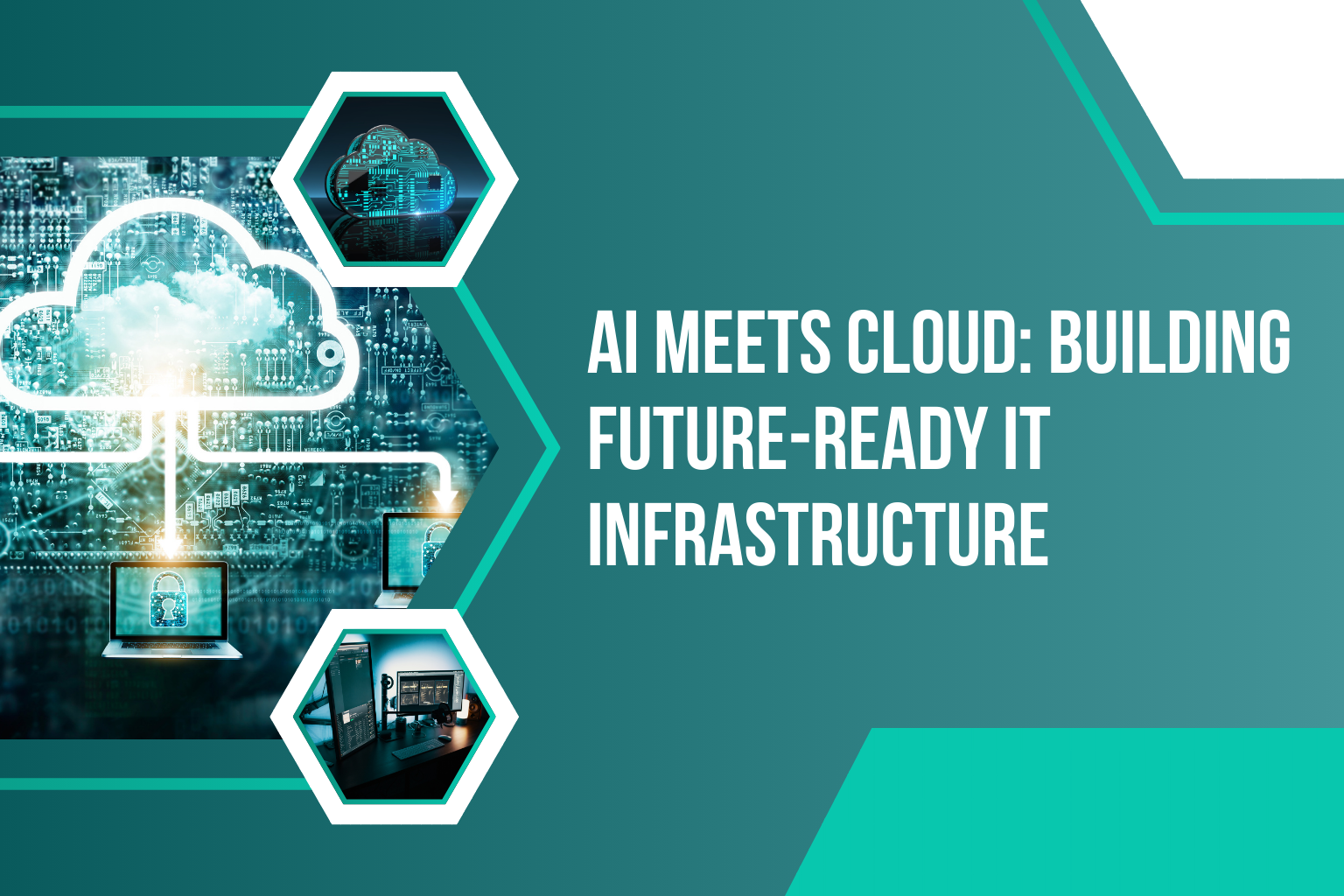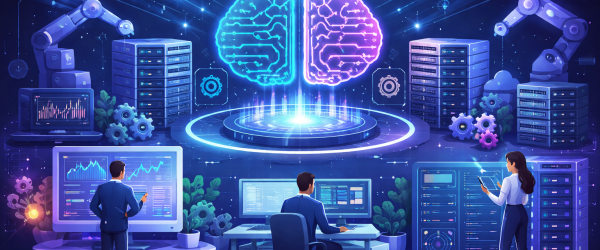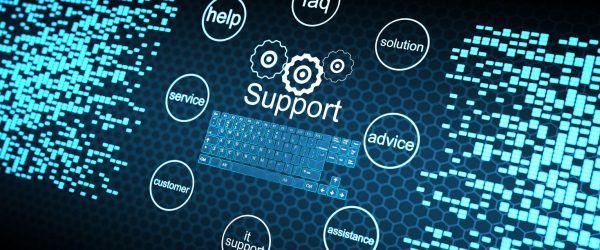Intoduction
In an age where digital transformation is not optional but essential, combining Artificial Intelligence (AI) with cloud infrastructure is rapidly becoming a cornerstone for business agility, resilience, and growth. For IT leaders, DevOps engineers, CTOs, and enterprise architects, the question is no longer if to adopt AI-powered cloud infrastructure, but how to do it right to build future-ready infrastructure.
Why AI + Cloud? The Imperative for IT Infrastructure
- In 2025, 94% of enterprises report using cloud services in some form. This shows cloud adoption is nearly universal among large organizations.
- The global cloud computing market in 2025 is estimated to be worth USD $ 900 billion, and forecasts indicate it will reach over a trillion dollars in the near future.
- At the same time, organizations are increasingly deploying AI workloads in the cloud: more than 9.7 million developers globally are running AI/ML workloads in cloud infrastructure.
These trends show two things: (1) cloud infrastructure is nearly everywhere, and (2) AI is becoming a primary use case for that infrastructure. Together, they enable possibilities such as auto-scaling, intelligent resource allocation, predictive maintenance, and cost optimization.
Components of Future-Ready IT Infrastructure
To build infrastructure that can support AI + cloud together, the architecture must address several key components:
| Component | Purpose | What to Consider / Best Practices |
| Cloud Platform & Environment | For resilience, continuous delivery, and efficiency | Use hybrid / multi-cloud strategies to reduce vendor lock-in, ensure regulatory compliance, and improve latency. |
| AI/ML Pipelines & Compute Resources | To train, infer, and deploy AI models at scale | GPU/TPU resources, containerization / Kubernetes, serverless inference, and autoscaling. |
| Storage & Data Architecture | Handle large volumes of data (structured, unstructured) | Provides scalability, geographic distribution, and high availability |
| Observability, Monitoring & Logging | To see what is happening and detect issues | Centralized logging, metrics, tracing; use cloud native tools + third-party where needed. |
| Security, Compliance, Governance | Protect data and ensure regulatory requirements | Identity & access management, encryption, policy as code, auditing. |
| Automation & DevOps Practices | Infrastructure as Code (IaC), CI/CD, blue/green or canary deployments, automated scaling, and failover. | Infrastructure as Code (IaC), CI/CD, blue/green or canary deployments, automated scaling and failover. |
Real-World Use Cases: AI + Cloud in Action
Here are some practical use cases that show how AI and cloud together enable future-ready operations:
- Predictive Scaling:
AI models analyze usage patterns, traffic spikes, trends in resource usage, and automatically scale up compute or storage before overloads occur—preventing performance degradation. - Automated Failover and Self-Healing:
When certain cloud resources or services fail, infrastructure can shift traffic, restart services, or re-provision resources without human intervention. - Cost Optimization:
Using AI to monitor idle resources, over-provisioning, or usage inefficiencies, and automatically suggesting or turning off idle services. Some organizations report up to 30-40% cost savings in cloud TCO (Total Cost of Ownership). - Edge + Cloud Hybrid AI Workloads:
For latency-sensitive applications (IoT, AR/VR, etc.), compute or inference happens at edge locations, while bulk training or analytics happens in the cloud — optimizing both performance and cost.
Improved Developer Velocity & Time to Market:
Cloud environments make setup fast; AI‐enabled services (ML as a service, model marketplaces) enable enterprises to build and deploy intelligent features more quickly.
Benefits & Trade-offs: What Organizations Gain
| Benefit | Approximate Gains* | Key Trade-offs / Risks |
| Scalability & Elasticity | Ability to handle variable workloads smoothly | Over-provisioning or unpredictable cost spikes |
| Faster Innovation | Reduced time to deploy new features | Need for strong CI/CD, testing, rollback plans |
| Operational Efficiency | Cost savings, reduced manual work | Need for strong CI/CD, testing, and rollback plans |
| Resilience & High Availability | Improved uptime, fewer outages | More complex architecture; more moving parts to manage |
| Data-Driven Decision Making | Better insights, smarter resource allocation | Requires skilled teams, tooling, and monitoring |
Steps to Building Future-Ready AI + Cloud Infrastructure
- Assess & Plan Cloud Strategy
Define which workloads go public cloud, which remain on-premises, or hybrid; consider regulatory, cost, and performance aspects. - Choose the Right Tools & Services
Pick cloud providers, AI/ML platforms, storage, observability tools that align with your needs. For example, leveraging IaC tools and Kubernetes for portability. - Invest in Observability & Monitoring
Without visibility, you can’t optimize or secure well. Use metrics, logs, traces; set up alerts, dashboards, anomaly detection. - Implement AI/ML Workloads Safely
Ensure data quality, model validation, performance metrics, bias detection, and security. - Enable Automation & Reliability
Use self-healing patterns, automated scaling, backups, disaster recovery. Embrace DevOps / site reliability engineering (SRE) practices. - Optimize Costs & Governance
Keep close tabs on cloud spend (FinOps practices), data residency, compliance, identity management.
Key Stats for Context
- 94% of enterprises worldwide now use some cloud service.
- 72% of global workloads are now cloud-hosted, up from about 66% last year.
- Enterprise cloud platform spending / infrastructure as a service (IaaS) grew 22.5% year-over-year in 2024, reaching ~$171.8 billion in 2025.
Over 9.7 million developers worldwide are running AI/ML workloads in cloud environments.
Challenges & Best Practices
- Cost Overruns & Hidden Cloud Spend: Without visibility, usage can blow up. Use tagging, budgeting tools, and FinOps practices.
- Security & Compliance: Especially in regulated sectors, ensure encryption (at rest / in transit), proper IAM, and audits.
- Skill Gaps: AI infrastructure + cloud require expertise in both. Consider training, hiring, or partnering.
- Vendor Lock-In Risks: To mitigate, use open tools, containers, hybrid/multi-cloud, with portable formats (Kubernetes, etc.).
Testing, Monitoring, Fallbacks: Always have monitoring and rollback strategies — systems fail; resilience matters.
The Future Outlook
- The cloud computing market is forecast to keep growing strongly beyond 2025 (CAGR high teens), with multi-cloud / hybrid architectures becoming the default for large enterprises.
- AI workloads, especially generative AI, inference, and edge inference, will push infrastructure needs (GPU/accelerator usage, data locality, latency) in new directions.
Organizations that integrate AI in their cloud infrastructure, with observability, automation, and governance built in, will be the ones resilient in uncertain environments (security breaches, supply chain shocks, regulatory shifts).
Conclusion
The AI meeting cloud isn’t just a hype trend — it’s the foundation for future-ready IT infrastructure. When done well, it unlocks scalability, agility, cost efficiency, and innovation. It requires careful planning, observability, automation, security, and a culture that embraces continuous learning.
If your organization is ready to move beyond mere cloud migration to designing infrastructure that learns, adapts, and scales, then AI + cloud is your path forward.







